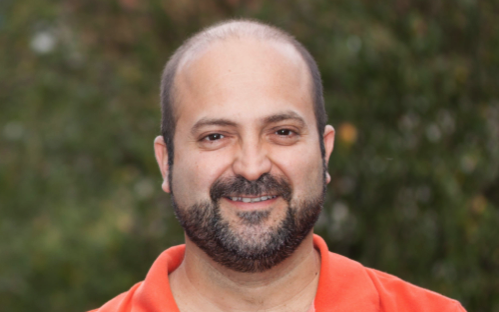Diogo Leite, Ruan Fernando Lòpez, Diana Victoria Ramirez and Jibril Mammeri presented posters at the SIB days 2018
Exploration of a large spectrum of machine-learning techniques to predict phage-bacterium interactions
Diogo Leite1, Grégory Resch3, Yok-Ai Que2, Xavier Brochet1, Miguel Barreto1 and Carlos Peña1
1School of Business and Engineering Vaud (HEIG-VD), University of Applied Sciences Western Switzerland (HES-SO), Switzerland & Swiss Institute of Bioinformatics (SIB)
2Department of Fundamental Microbiology, University of Lausanne, Lausanne, Switzerland.
3Department of Intensive Care Medicine, Bern University Hospital (Inselspital), Bern, Switzerland
Abstract
Applying One-Class learning algorithms for predicting phage-bacteria interactions
Juan Fernando López4, Diogo Leite1, Grégory Resch3, Yok-Ai Que2, Xavier Brochet1 and Carlos Peña1
1School of Business and Engineering Vaud (HEIG-VD), University of Applied Sciences Western Switzerland (HES-SO), Switzerland & Swiss Institute of Bioinformatics (SIB)
2Department of Fundamental Microbiology, University of Lausanne, Lausanne, Switzerland.
3Department of Intensive Care Medicine, Bern University Hospital (Inselspital), Bern, Switzerland
4Autonomous University of the West (Universidad Autónoma de Occidente), Cali, Colombia
Abstract
The misuse of antibiotic drugs contributes to the emergence and rapid dissemination of antibiotic resistance worldwide, threatening medical progress. A re-emerging therapy, dubbed phage-therapy, might represent an alternative for this. Phage-therapy is based on bacteriophages that specifically infect and kill bacteria during their life cycle. The success of phage therapy mainly relies on the exact matching between the bacteria and the phage. However, this is a time-consuming process achieved only in laboratories.
Hence, the fast identification of potential phage candidates capable of dealing with a given bacteria is essential for using phage-therapy in routine. Machine learning algorithms constitute a promising approach to achieve this goal. Unfortunately, public databases contain highly imbalanced interaction data (i.e., only positive phage-bacterium interactions); making it harder to use classic machine learning algorithms that needs relatively-balanced classes to work. To address this problem, we are exploring the use of One-Class learning methods, which are robust tools to deal with imbalanced datasets.
We have tested an odd number of One-Class learning techniques merged with the ensemble-learning paradigm on real phage-bacteria interactions and obtained accurate results in different types of metrics (e.g. accuracy and f1-score up to 80%). Further work could include developing new methods for One-Class classification and applying them to other types of real data.
Applying One-Class learning algorithms for predicting phage-bacteria interactions
Agent-based modelling of the behavior of stem cells in a 3D-printed bio-device to be used in regenerative medicine
Victoria López1, Carlos Peña2 and Álvaro J. Rojas1
1Autonomous University of the West (Universidad Autónoma de Occidente), Cali, Colombia
2School of Business and Engineering Vaud (HEIG-VD), University of Applied Sciences Western Switzerland (HES-SO), Switzerland & Swiss Institute of Bioinformatics (SIB)
Abstract
A novel treatment proposed for patients who have suffered a myocardial infarction is based on the design and construction of a 3D-printed bio-device where mesenchymal stem cells (MSC), along with other cell types, are cultivated for being later implanted in the patient’s myocardium.
It is very important to understand the behavior of the bio-device, which can be affectedby different variables. In line with this goal, we present, herein, our contribution to the development of a computational model of the behavior of the MSC and other cell types used in the 3D-printed scaffold.
First, we explored the use of a model based on ordinary differential equations and concluded that it was limited regarding the possibilities to take into account additional characteristics of the cellular microenvironment, we opted for an Agent-Based modeling approach. The model considers some basic MSC’s characteristics and their interactions with the microenvironment. Until now, our results have shown that the emergent behavior of the cells in the model agrees with other cellular modeling results and observations of preliminary experiments. Further simulations will be performed to analyze the effect of parameters in the results and will be validated with in-vitro observations.
MaLDIveS : Machine Learning Diagnostic Soil
Jibril Mammeri1,2, Xavier Brochet1,2, Thierry Heger2,3, Sven Bacher4, Magdalena Steiner4, Carlos Peña1,2
1School of Business and Engineering Vaud (HEIG-VD), University of Applied Sciences Western Switzerland (HES-SO), Switzerland & Swiss Institute of Bioinformatics (SIB)
2Department of Fundamental Microbiology, University of Lausanne, Lausanne, Switzerland.
3School of Viticulture and Enology (Changins), University of Applied Sciences Western Switzerland (HES-SO), Switzerland
4Department of Biology, Unit of Ecology and Evolution, University of Fribourg, Switzerland
Abstract
MaLDiveS is an ongoing multidisciplinary project, which aims to develop a new method of biomonitoring based on next-generation sequencing data and their treatment by machine learning methods. It will allow to assess the impact of treatment on the health and quality of the vines soil. This work will improve the understanding of pesticides and other environmental factors impact on protists communities. Our main objective is to identify bioindicators associated with environmental stress and to characterize the behavior of their relative abundance, which will lead to the construction of diagnostic models.

